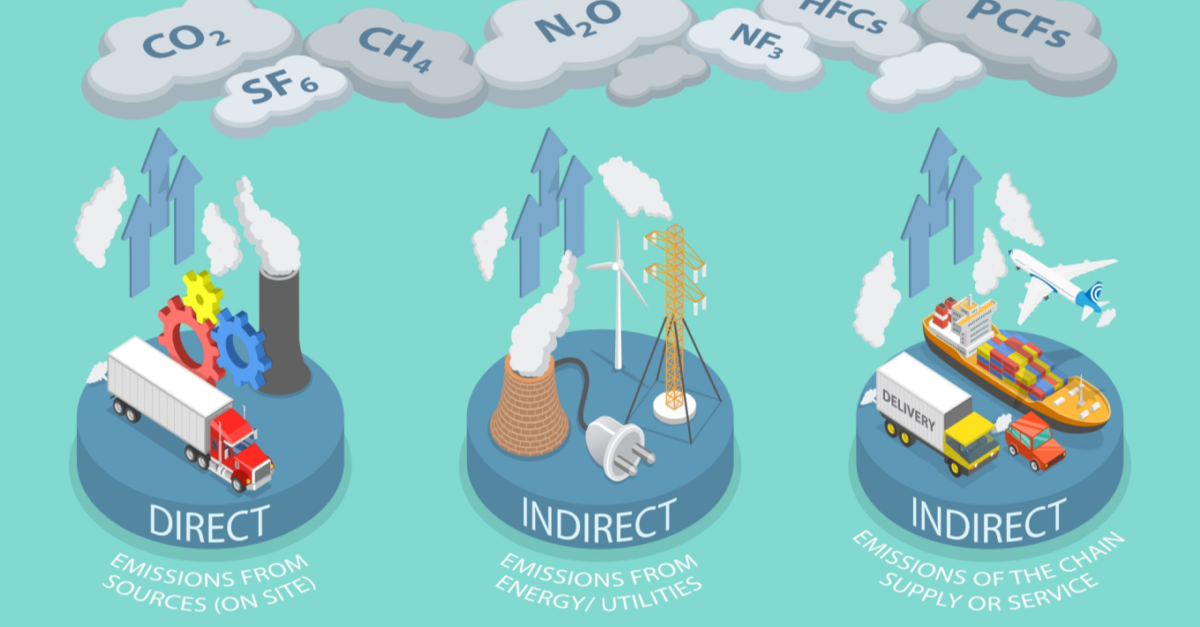
What are Emissions and GHG Reporting for NVOCCs
Finding meaningful emissions reductions and better data for greenhouse gas (GHG) reporting can be troubling at best. However, some blame in poor tracking comes from simply not realizing that the network beyond your reach may actually be responsible for many emissions. For instance, non-vessel operating common carriers (NVOCCs) play an essential role in international trade as the point of contact and contract between carriers and shippers.
Because NVOCCs do not personally operate ships, they purchase carrier space as freight forwarders; however, since not all forwarders ship sea freight, not all are NVOCCs. Similarly, figuring out how those NVOCCs affect emissions requires an understanding of their use of vessels although trade lane emission impacts may vary widely. The integration of data for that purpose is critical to understanding emissions and GHG produced throughout the value chain.
NVOCCs are vital in today’s global market because of their ability to bridge together two sides of the industry, providing their clients with forecasted costs, solutions, and, most importantly capacity. In November 2021, UN economists shared with UNCTAD that “Global trade is expected to be worth about $28 trillion this year — an increase of 23 percent compared with 2020 — but the outlook for 2022 remains very uncertain.” Uncertain indeed as BCOs prioritize sustainability at higher rates than ever before. Moreover, increased consumer demand means more freight moving through global networks and generating more emissions, and NVOCCs need to know how to track emissions data and apply it to lower their carbon footprint.
Greenhouse Gas Emissions Reporting: What Is Critical Reporting & Why it Matters
The common understanding of sustainability is no longer limited to recycling or manufacturing emissions reporting. Today’s consumers understand that the true sustainability of a product also includes all transportation for the item as different raw materials to the completed product in the customer’s hands. NVOCCs and supply chain advocates understand this includes working to reduce GHG emissions. Unfortunately, tracking GHG emissions is not as simple on a global scale. Unlike typical OTR and rail-based transportation, the ocean leg of the journey is subject to major changes.
How will sailing through a given port or canal affect emissions, and what happens if the freight is moved to a less-efficient vessel? The end result is still a higher overall footprint, and without the accuracy in the calculations to consider the full picture of transportation, the whole process becomes about averages of averages of averages. This is substandard reporting. However, a different approach that can consider everything allows freight forwarders and other NVOCCs to track emissions and know when and how they occur.
Why NVOCCs Must Follow GHG Reporting Protocols
Despite the global and local impact of carbon pollution on the environment, there are minimal international treaties and domestic policies that enforce GHG reporting or sustainable practices. Yes, there are a few organizations that accredit supply chain parties on emissions reporting. For instance, the Smart Freight Center created the GLEC framework, which encourages global omnimodal trade to synchronize their emissions reporting process. GLEC abiding data, as well as other accurate GHG reporting, provides NVOCCs with a true understanding of their total emissions, including the use of data to:
- Increase sustainable voyage planning.
- Figure out ways to enable supply chain optimization.
- Track and leverage the greenest carriers.
- Prepare for future regulatory requirements.
Understanding Who Should Count Scope 3 Emissions and Why
Emissions tracking isn’t solely about pulling a random data point from the ether and claiming to track total emissions. No, meaningful improvement means tracking those emissions, counting them properly and doing what’s necessary to bring them down. NVOCCs can further apply data to validate their scope three emissions and know whether to count those emissions in their organization or determine if those emissions are being counted by another carrier or party.
After all, the emissions generated within a NVOCC value chain are already counted by the carrier making the move. As such, those emissions are already in the scope of another company, and while it may not be worthy to count those emission as their own, NVOCCs should still know how those emissions are affecting global sustainability.
Furthermore, the NVOCC needs to know whether to pass along their emissions calculations for shippers or BCOs to count or whether to count them in-house. Regardless, the key is to gain insight into where all emissions derive and whether the emissions are being double counted. In turn, that data can help NVOCCs prioritize their operations and find ways to lower not only their emissions but those further out in the value chain without doubling up on actual emissions generated or reduced.
Get Control Over Emissions and Ensure Your Company Remains Compliant With GHG Reporting Regulations by Partnering With Searoutes
The first step to properly minimizing emissions is discovering what areas of the operation need to be made environmentally responsible. Careful calculation of CO2 emissions enables NVOCCs to participate in sustainable initiatives for a brighter future. Emissions calculations requires a top-notch understanding of data and the ability to consider that data in the context of scope, i.e., where did those emissions come from? As global trade continues to grow throughout the rest of this year, NVOCCs need to evaluate their emissions reporting and management strategies. To learn more about GHG reporting and its role in today’s sustainably-focused economy across all transportation and how your company can be part of the solution, request a demo with Searoutes today.